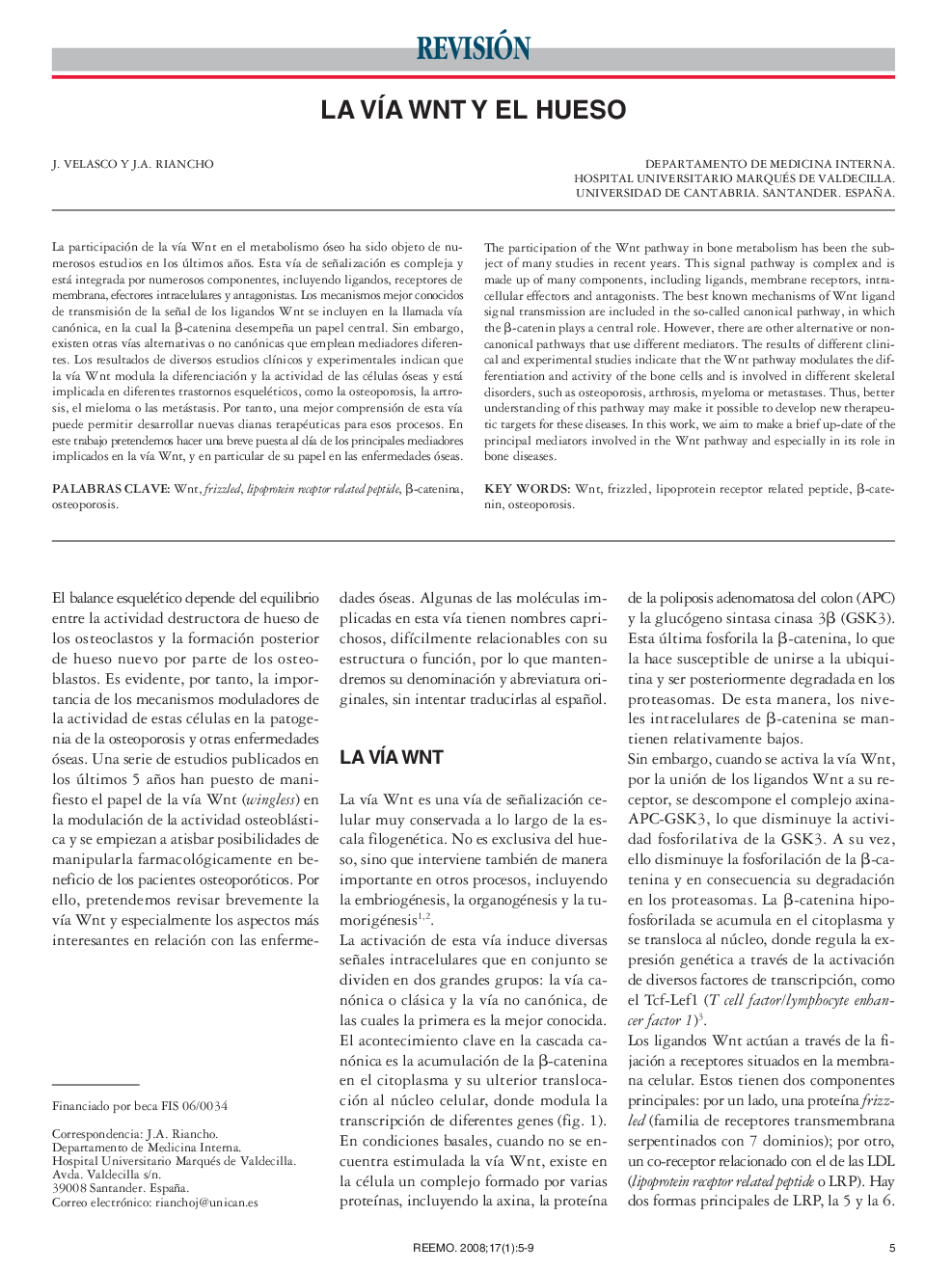| Article ID | Journal | Published Year | Pages | File Type |
|---|---|---|---|---|
| 3278038 | Revista Española de Enfermedades Metabólicas Óseas | 2008 | 5 Pages |
Abstract
The participation of the Wnt pathway in bone metabolism has been the subject of many studies in recent years. This signal pathway is complex and is made up of many components, including ligands, membrane receptors, intracellular effectors and antagonists. The best known mechanisms of Wnt ligand signal transmission are included in the so-called canonical pathway, in which the β-catenin plays a central role. However, there are other alternative or noncanonical pathways that use different mediators. The results of different clinical and experimental studies indicate that the Wnt pathway modulates the differentiation and activity of the bone cells and is involved in different skeletal disorders, such as osteoporosis, arthrosis, myeloma or metastases. Thus, better understanding of this pathway may make it possible to develop new therapeutic targets for these diseases. In this work, we aim to make a brief up-date of the principal mediators involved in the Wnt pathway and especially in its role in bone diseases.
Related Topics
Health Sciences
Medicine and Dentistry
Endocrinology, Diabetes and Metabolism
Authors
J. Velasco, J.A. Riancho,
